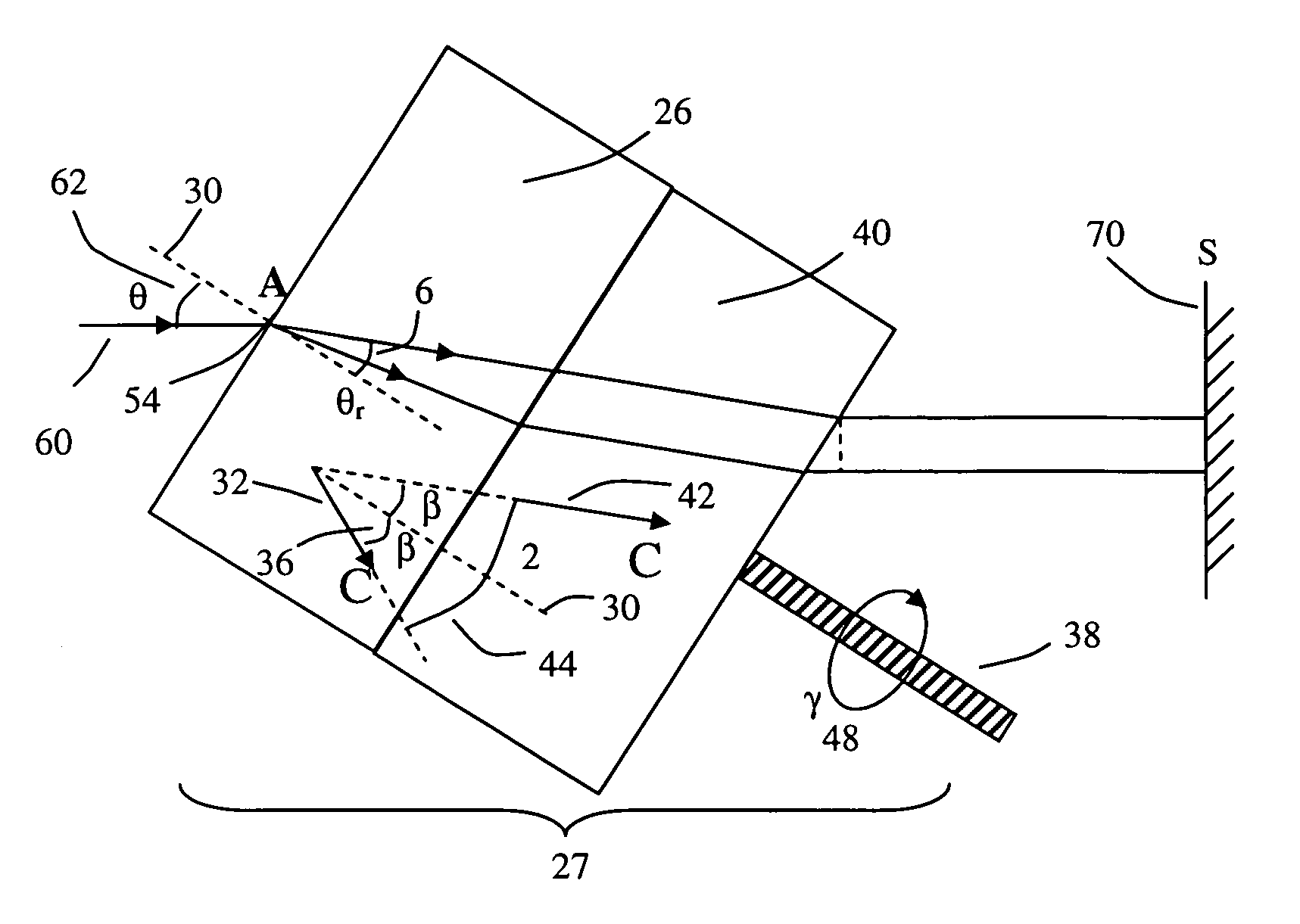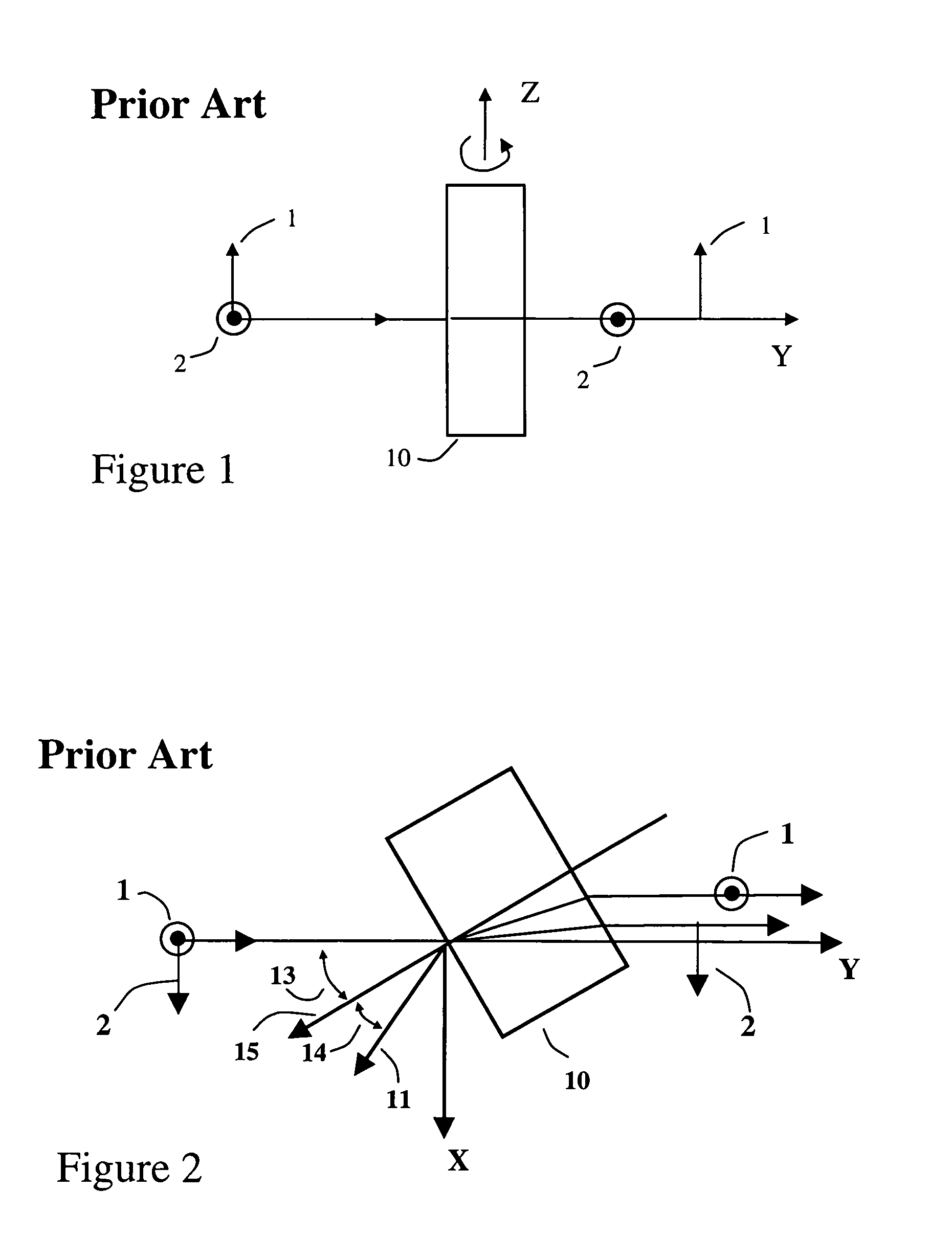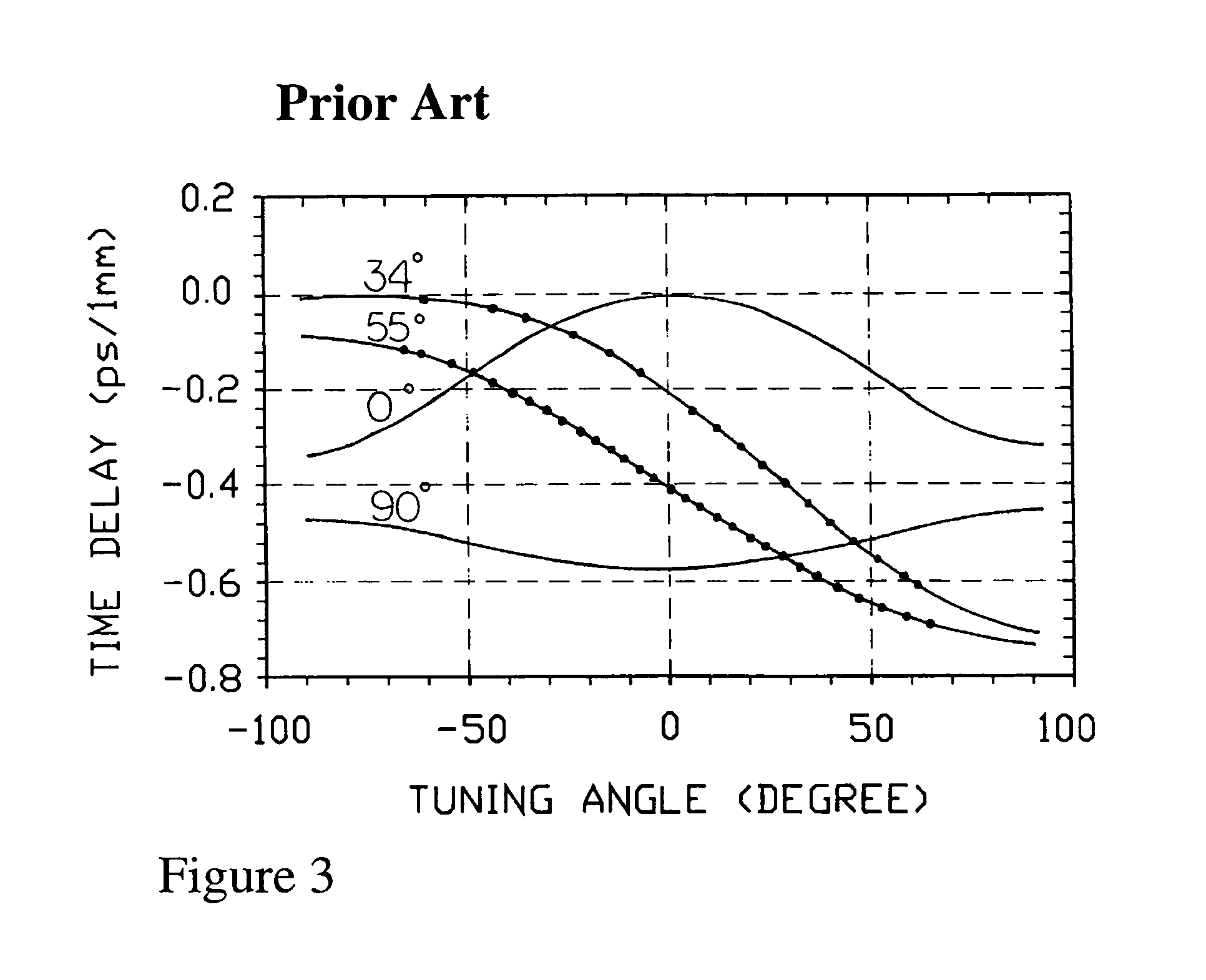Rotationally tunable optical delay line
- Summary
- Abstract
- Description
- Claims
- Application Information
AI Technical Summary
Benefits of technology
Problems solved by technology
Method used
Image
Examples
case 1
[0076]The light ray enters traveling parallel to the c-axis. In this case the light ray is polarized perpendicular to the c-axis and is called an ordinary ray or “o-ray”. Its propagation velocity depends only on the value of the crystal's ordinary refractive index, no.
case 2
[0077]The light ray enters traveling perpendicular to the c-axis. In this case any component of the light ray that is polarized perpendicular to the c-axis is an o-ray, but any component of the light that is polarized parallel to the c-axis is called an extraordinary ray or “e-ray”. The propagation velocity of the e-ray is different from that of the o-ray and depends only on the value of the crystal's extra-ordinary refractive index, ne.
case 3
[0078]The light ray enters the uniaxial crystal along a direction not parallel to the crystal c-axis. It separates into two orthogonally polarized rays: an ordinary ray or “o-ray”, and an extraordinary ray or “e-ray”. These two rays travel at slightly different velocities and in slightly different directions. The o-ray is polarized perpendicular to the c-axis and propagates at a speed dependent on the crystal's ordinary refractive index, no. The e-ray is polarized in the plane defined by the o-ray and c-axis, and propagates at a speed that depends on no, ne, and φ—the angle between the o-ray and the c-axis. For this general case the e-ray refractive index has an angular dependence
ne(φ)=[sin2(φ) / ne2+cos2(φ) / no2]−1 / 2 (1)
When φ=0 degrees, case 3 reduces to case 1. When φ=90 degrees, case 3 reduces to case 2. Since the e-ray propagation velocity depends on ne,(φ), then equation (1) shows that the e-ray transit time through a uniaxial crystal can be changed by adjusting φ. This property...
PUM
 Login to View More
Login to View More Abstract
Description
Claims
Application Information
 Login to View More
Login to View More - R&D
- Intellectual Property
- Life Sciences
- Materials
- Tech Scout
- Unparalleled Data Quality
- Higher Quality Content
- 60% Fewer Hallucinations
Browse by: Latest US Patents, China's latest patents, Technical Efficacy Thesaurus, Application Domain, Technology Topic, Popular Technical Reports.
© 2025 PatSnap. All rights reserved.Legal|Privacy policy|Modern Slavery Act Transparency Statement|Sitemap|About US| Contact US: help@patsnap.com



